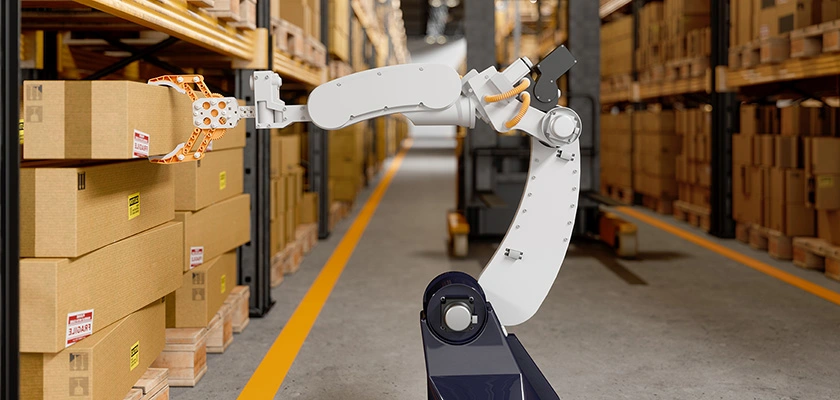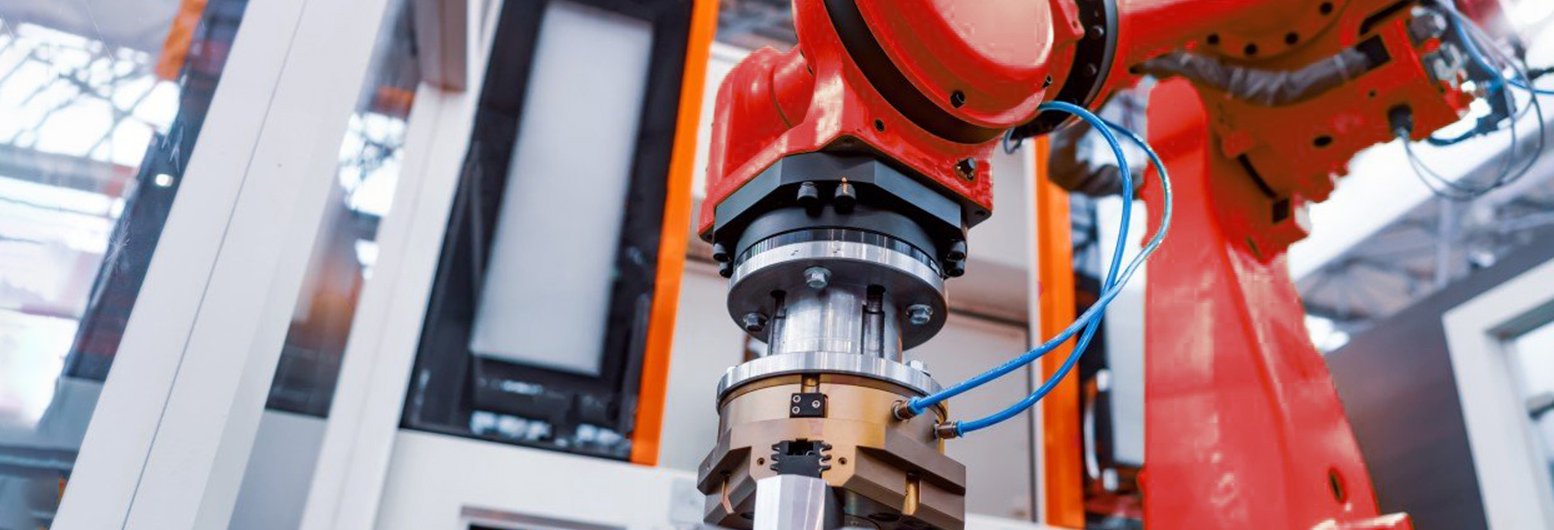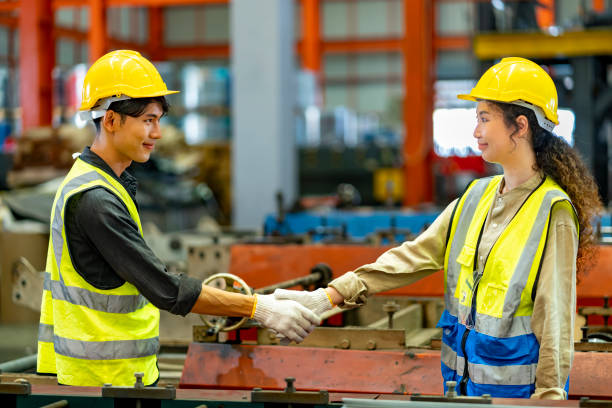Products & Services Industry Guides

As industries continue to embrace automation, the deployment of autonomous robots is revolutionising work processes across diverse sectors, from manufacturing and logistics to healthcare and agriculture.
However, autonomous robot deployment also brings forth a myriad of challenges and unveils unprecedented opportunities for innovation and efficiency.
In this article, we explore the fascinating world of autonomous robot deployment, including the challenges and solutions involved with the machine.

Navigation is a fundamental aspect of autonomous robot operation, but it poses significant challenges that must be addressed to ensure effective performance in dynamic environments.
Obstacle Detection: Factories often contain various obstacles such as machinery, crates, and debris. Autonomous robots must accurately detect and classify these obstacles to plan safe and efficient paths through the factory floor.
Narrow Passages: Some areas of a factory may have narrow passages or congested spaces where manoeuvring can be challenging for autonomous robots. Navigating through these areas while avoiding collisions requires precise control and path-planning algorithms.
Uneven Terrain: Factory floors may have uneven surfaces or obstacles such as ramps, steps, or thresholds that can pose challenges for autonomous navigation. Robots need to adapt their navigation strategies to traverse these obstacles safely and efficiently.
To face navigation and obstacle avoidance in an unstructured environment, advanced sensor fusion technologies, such as LiDAR, cameras, and inertial sensors, coupled with robust localisation algorithms like SLAM (Simultaneous Localisation and Mapping) are used.
Additionally, sophisticated AI-driven decision-making systems enable robots to interpret sensor data in real time and make autonomous navigation decisions. This is complemented by perception algorithms that process sensor data to create a detailed representation of the robot's environment, including 3D maps of terrain elevation and obstacle locations.

Regulatory compliance poses a significant challenge for autonomous robots, especially involving liability and accountability.
Challenges of liability and accountability involving autonomous robots stem from the complexities of determining responsibility in the event of accidents, errors, or damages.
Autonomous robots often make decisions based on complex algorithms and AI systems. When these decisions result in unintended consequences or harm, determining who is accountable becomes challenging
Solving liability and accountability issues with autonomous robots requires a multi-faceted approach that addresses legal, technical, and ethical considerations.
One of the solutions requires establishing clear legal frameworks that define the responsibilities and liabilities of different stakeholders involved in the development, deployment, and operation of autonomous robots.
These frameworks should account for the unique characteristics of autonomous systems and guide on issues such as product liability, negligence, and compensation in the event of accidents or harm.
Fortunately, there is much professional assistance and help from experts available in addressing these regulatory compliance challenges, such as the fully integrated and specialised service offered by SLS.
They can help navigate the complex regulatory landscape, interpret relevant laws and standards, and develop comprehensive compliance strategies tailored to specific industry requirements.

Another regulatory compliance challenge arises from data privacy and security concerns, especially in applications involving autonomous robots that collect and process sensitive information.
Autonomous robots often gather vast amounts of data from their surroundings using sensors such as cameras, lidar, and GPS. This data may include sensitive information such as images, video feeds, location data, and personal identifiers.
In addition, autonomous robots often transmit data wirelessly to remote servers or control systems for analysis, monitoring, or control purposes. This data transmission may occur over insecure networks, such as Wi-Fi or cellular networks, making it vulnerable to interception, eavesdropping, or cyberattacks.
These issues can be solved by following these methods:
Data Encryption and Anonymisation: Implement robust encryption mechanisms to secure data transmission and storage within autonomous robot systems. Additionally, anonymise personal or sensitive data to minimise the risk of identification in the event of a breach.
Access Controls and Authentication: Implement stringent access controls and authentication mechanisms to restrict access to sensitive data and functionalities within the autonomous robot system. Utilise role-based access control (RBAC) and multi-factor authentication (MFA) to ensure that only authorised personnel can access critical resources.
Secure Communication Protocols: Use secure communication protocols, such as Transport Layer Security (TLS), to encrypt data transmission between autonomous robots, control systems, and external servers. Employ secure channels for data exchange and ensure end-to-end encryption to prevent interception or tampering.

Integrating autonomous robots into new systems presents a unique set of challenges, requiring careful consideration of technical, operational, and organisational factors.
Autonomous robots often must integrate with existing systems, such as manufacturing lines or warehouse management systems. Compatibility issues can arise due to differences in communication protocols, data formats, or hardware interfaces.
Furthermore, it also relies on sensor data for perception, navigation, and decision-making. According to Journal Procedia Manufacturing, integrating data from multiple sensors, such as LiDAR, cameras, and inertial sensors, while ensuring accuracy and reliability can be challenging.
This is due to the diverse sources of data with different formats, resolutions, and sampling rates. This data can be complex and may require preprocessing, normalisation, or fusion techniques to ensure compatibility and consistency.
To prevent disoriented data, standardised communication protocols and middleware frameworks are used to facilitate interoperability between autonomous robots and existing systems.
The robot is equipped with standardised data interfaces and APIs (Application Programming Interfaces) that allow autonomous robots to communicate with existing systems using well-defined methods and protocols.
These interfaces can support both inbound and outbound data exchange, enabling seamless integration and interaction between autonomous robots and external systems.

In conclusion, embracing the transformative potential of autonomous robots begins with a deep understanding of the challenges they pose and the innovative solutions available to overcome them.
By navigating complexities such as technical limitations, regulatory compliance, and integration hurdles, organisations can harness the power of autonomous robotics to revolutionise industries and drive progress.
Alternatively, for those seeking professional assistance or specialised expertise in dealing with autonomous robots, SLSPRO stands as a reliable partner.
SLSPRO experts offer comprehensive services and provide tailored solutions and specialised services to meet the unique needs of clients across various industries
Get in touch with us for professional help and greater operational efficiency today!
Explore Kassow Robots' innovative 7-axis cobots for versatile industrial applications. Precision, safety, and modularity.
Find Out MoreExplore Kassow Robots' innovative 7-axis cobots for versatile industrial applications. Precision, safety, and modularity.
Find Out More
 Contact Us
Contact Us 